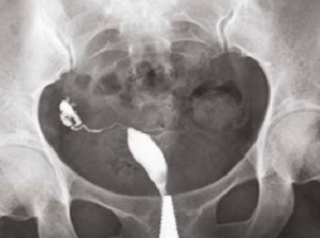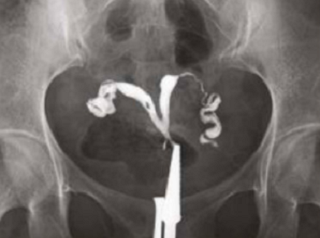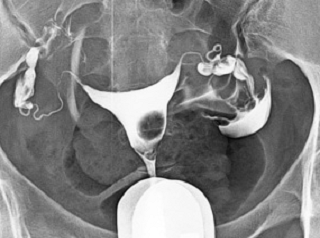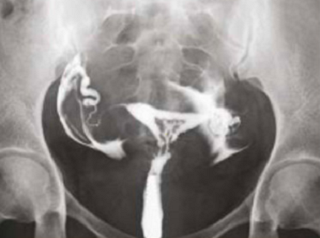The use of drugs administered with a syringe to prevent pain in a particular part of the body.
What is HSG?
Hysterosalpingography, also known as uterosalpingography, is a type of specialized X-ray used to examine the shape and structure of a woman’s uterus and fallopian tubes.

Fertility evaluation will be the first step you take before beginning the infertility treatment process.
Many patients have already had their blood drawn and know what to expect. Most patients, though, have not experienced a HysteroSalpingoGraphy (HSG).
So much of the infertility treatment process is about narrowing down the cause(s) of an individual’s infertility. The HSG, though not commonly known, is a beneficial way that your physician can determine the best path to help you on your journey to reproductive success.
Fear of the unknown can make many patients nervous or apprehensive about this aspect of their diagnostic work-up. However, learning all that IHR does to make the test painless & more manageable is hopefully reassuring.
Why do I need a Hysterosalpingograh (HSG)?
After ovulation, the body pushes the egg into the fallopian tubes where the sperm and egg meet, and fertilization can occur. Once an egg is fertilized, an embryo will develop and continue through the fallopian tubes until it reaches the uterus, where it will implant into the uterine lining.
HSG is performed routinely for patients having difficulty conceiving. (Who should seek fertility care?).
Why choose IHR for your HSG?
IHR places a high value on patient safety and comfort and goes out of its way to minimize discomfort. Here’s how:
We encourage taking a pain reliever 60 minutes prior.
Many women feel some cramping for about 2 minutes when the dye is filling the uterus. Therefore, we strongly encourage taking a pain killer. We also administer regional anaesthesia for maximum comfort.
We have very experienced clinicians who perform HSGs.
The clinicians at our practice who perform HSGs perform thousands each year and have the experience and expertise to help make your experience as comfortable as possible.
We encourage communication.
We encourage you if you are feeling any discomfort during the test, to communicate with your clinician performing the test, let us know if it hurts, and we may be able to make some adjustments to make you more comfortable.
We are selective about dye and instrument type.
We select a water-based dye that is known to cause the least amount of cramping instead of oil-based dye and an instrument that is known to cause the least amount of discomfort.
We care about your comfort.
We perform this procedure on a GYN table, which makes patients more comfortable, compared with a hospital table common in other locations.
Because we take great pride in the lengths to which we are able to go to make sure women are as comfortable as possible during an HSG, many physicians refer their patients to IHR for an HSG.
What does HSG assess?
-
Shape of the uterus

Normal shape

Unicornuate uterus

Complete septate uterus
-
Patency of fallopian tubes

Open tube

Closed tube
-
Uterine cavity

Clear/Normal

Submucosal fibroid

Adhesions/Synechiae
Frequently asked questions (FAQ)
-
What is regional anesthesia?
-
-
What is contrast medium?
-
A contrast medium is a radiological substance (usually a fluid) inserted into the body to obtain clear images of internal organs during an X-Ray study.
-
Are there any alternatives to performing HSG Tests?
Anything else that can help with diagnosing my fertility? -
You can go for laparoscopy, which requires general anesthesia. You can go for hysteroscopy, which gives a detailed viewing of the inside of the uterus. However, it can’t provide imaging of the tubal section, i.e., inside the fallopian tubes.
-
How long does an HSG take?
-
While the actual procedure takes about 5 minutes, you should plan to arrive for your HSG 30 minutes prior to your scheduled appointment. You can also expect to be with us for 45-60 minutes after the scheduled HSG start time.
-
Is it okay to drive home by myself after the test?
-
We recommend patients not to drive by themselves and not to sit in the backseat of a two wheeler.
-
When is the best time during my cycle to schedule the HSG?
-
The HSG test has to be done after you’ve finished your menstrual cycle but before you’ve ovulated. This means that the best time for you to have an HSG is about two to five days after you’ve finished your period. You should be extremely careful about timing your appointment accordingly.
However, if you’re someone whose periods come and go with great irregularity, try consulting your doctor and discussing this factor in detail before booking an appointment with him or her.
-
Who can administer an HSG?
-
HSGs can be performed by infertility specialists, obstetrician-gynecologists, radiologists, physician assistants, and other health care providers. Health care providers performing HSGs should be trained in performing pelvic exams and be technically proficient with the HSG technique. They should also be able to evaluate its findings and report them comprehensively.
-
How soon after the HSG can I resume intercourse?
-
Generally, we want patients to abstain from intercourse until after vaginal spotting or discharge stops, usually 5 to 7 days after the HSG.



.png) 0361-2800800
0361-2800800 (+91) 9864103333
(+91) 9864103333










